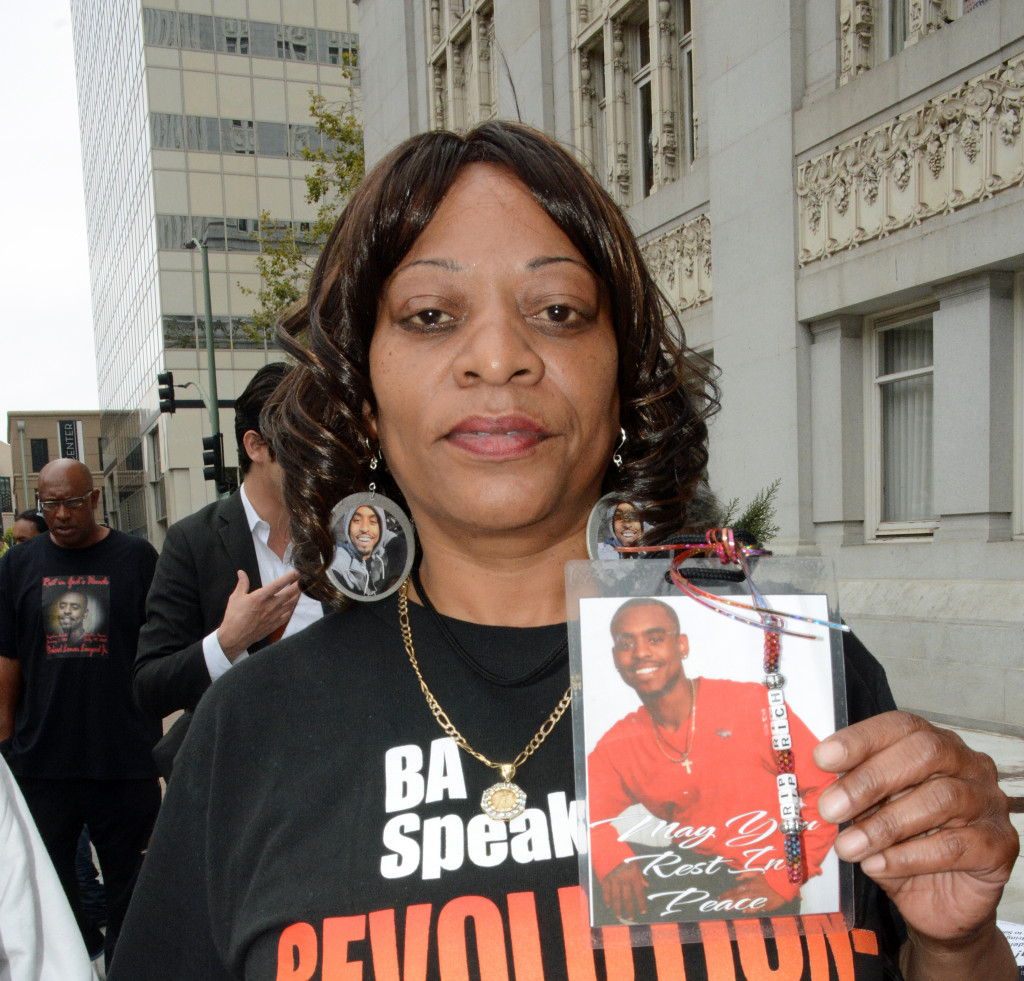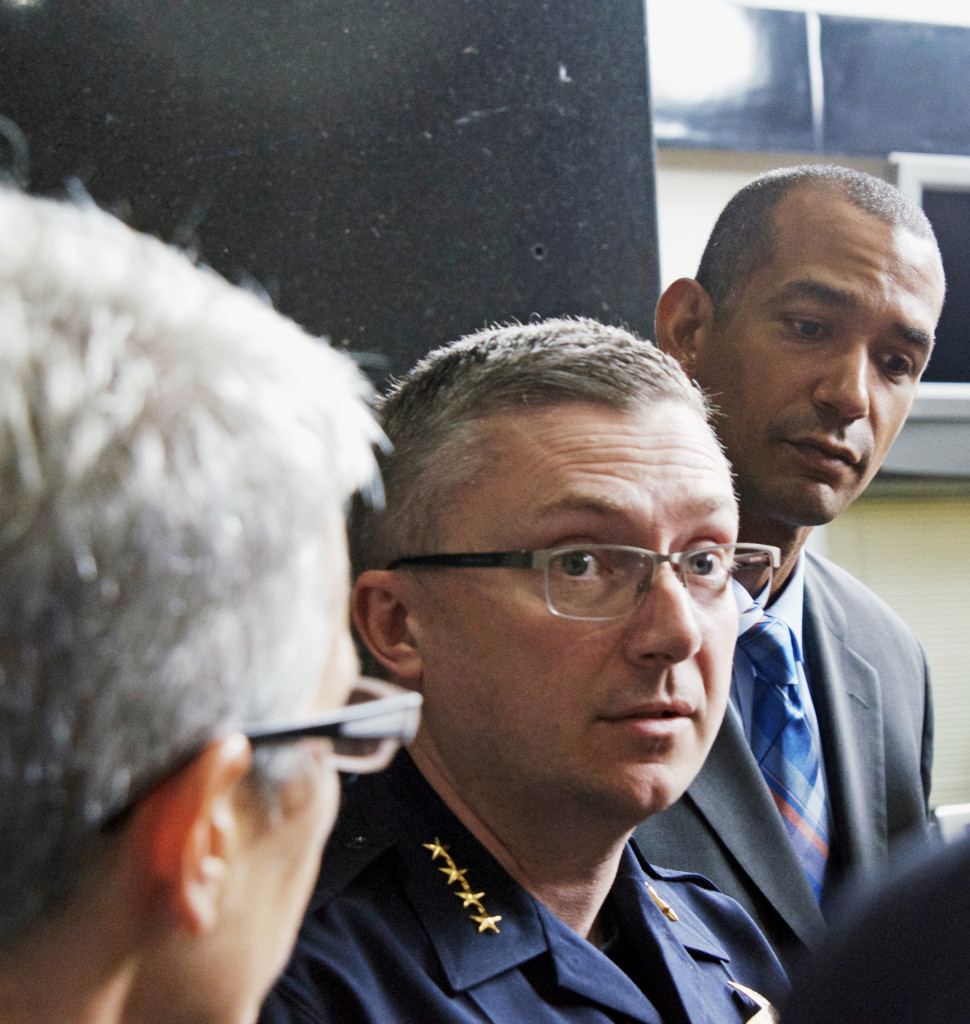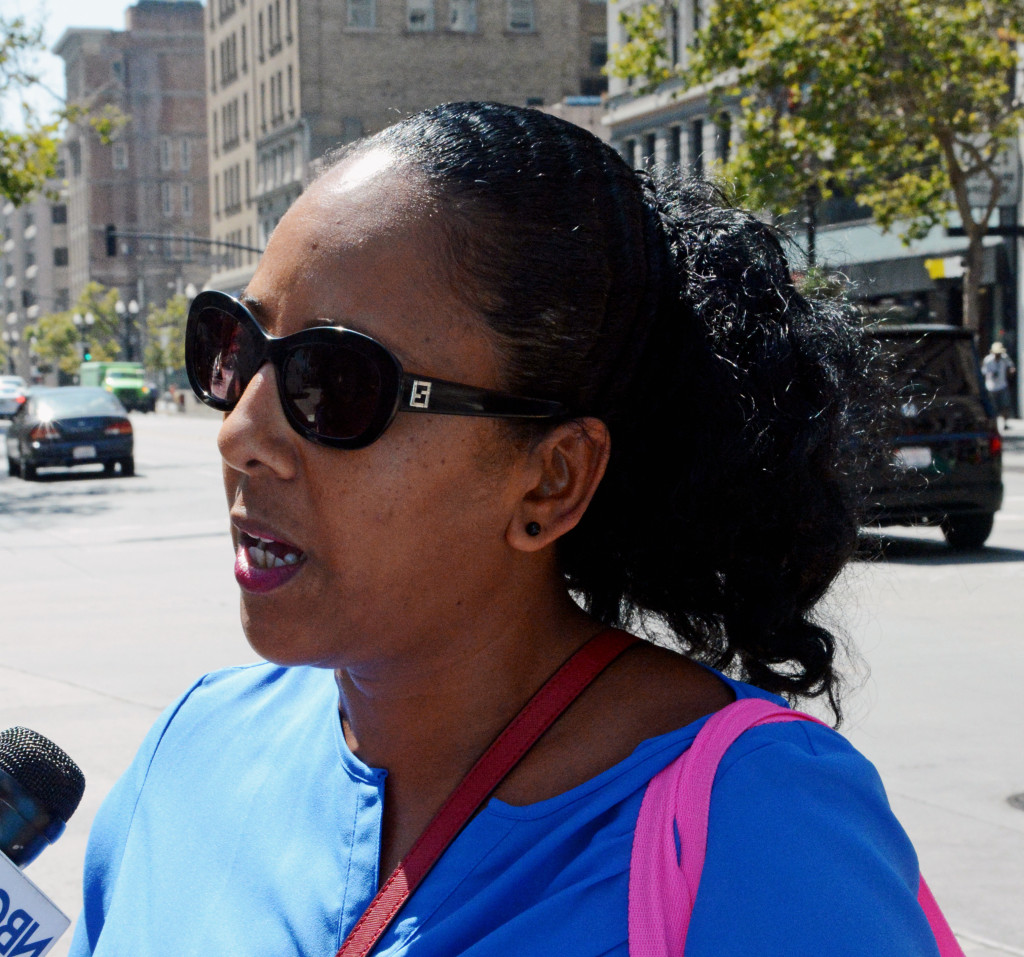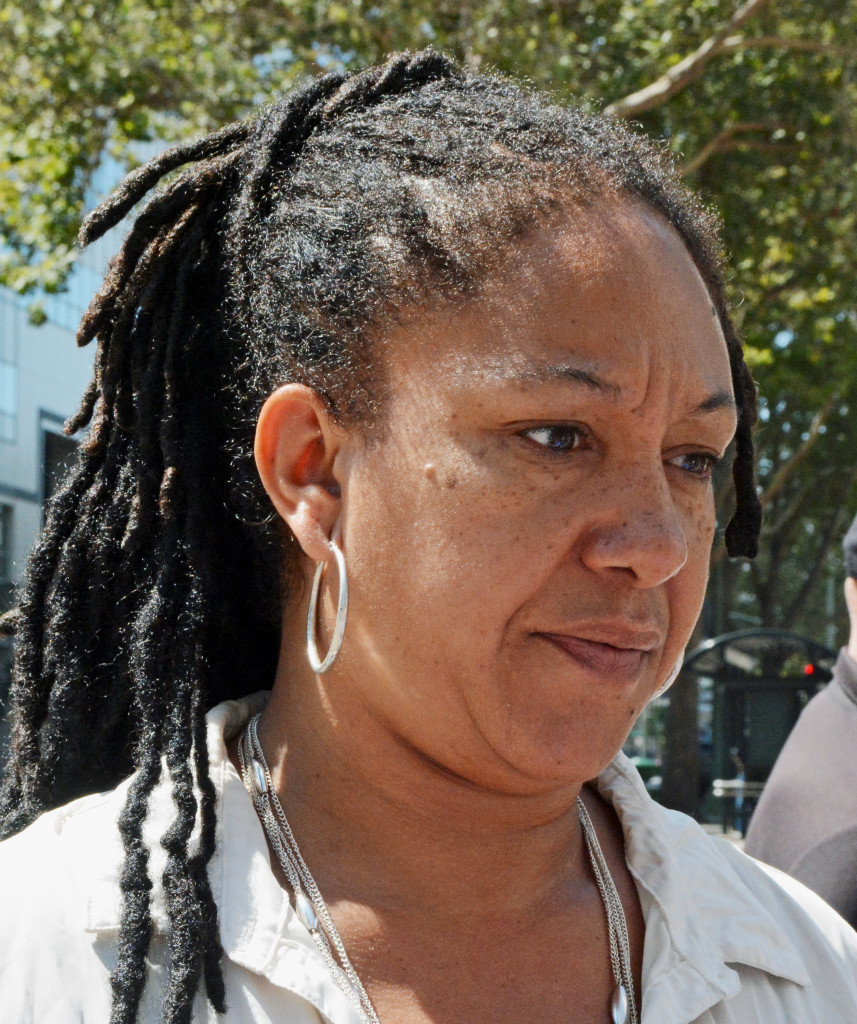Oakland Police Release Video footage in Two Police Involved Deaths
Aug 22, 2015
Posted in Equal Rights/Equity, Police-Public Safety

In an unprecedented move, the Oakland Police Department this week released body camera evidence to some representatives of the media but not to the general public in two police involved deaths, hoping to clear up what they consider “misinformation” that is circulating in the community about how the two young men died.
One of the two videos, viewed by the Oakland Post and some other media representatives at OPD headquarters on Wednesday morning, shows the killing of 28-year-old Nathaniel Wilks last week, who was driving a car that was wanted in connection with an armed robbery in July.

Wilks was shot by three officers after he ran away from police and then turned and ran toward them, with a what may have been a gun in his hand, which was pointing forward but not aimed at police.
The other video, which was edited, showed the police searching for Richard Linyard in East Oakland last month, who they say was eventually found wedged between two buildings and unresponsive.
The video showed the search for Linyard and cut to him wedged between the buildings. He appeared unresponsive, but the video did not show how he was removed.
Results of an autopsy are not available, and there is no official cause of death. Police say there were no external signs of a beating.
On Tuesday, OPD offered to allow families of the two young men to come to police headquarters to view the videos. Nathaniel Wilks´ family did the watch video of his shooting, but Richard Linyard’s family refused, according to police.
Wilk’s mother Marcia Yearwood, her son’s three-month-old daughter in a carrier by her side, spoke to the press Wednesday afternoon.
Though she had seen the police video, she was not convinced that the shooting was necessary.
“I still have a lot of questions,” she said, explaining that she was still in a state of shock. “He was a very intelligent young man. He was a family man. I want justice for him.”
OPD Lt. Roland Holmgren was the one who showed reporters the video. He narrated the department’s viewpoint and answered questions as the clips were played.

When Wilks ran toward officers, he had an object in his hand that was pointed in officers’ direction but not aimed at them. However, he could have fired at police from that position, Holmgren said.
“It’s a very dangerous scene,” he said.
Cat Brooks, who stood by his mother at the press briefing, said police could have found an alternative to killing Wilks.
“I don’t care what the brother did. He didn’t deserve to die,” said Brooks, who added that in Oakland and across the nation too many Black men and women are shot down in the streets by police and never live to be tried in a court.

In the case of Richard Linyard, age 23, who died on July 19 near 64th Avenue and International Boulevard, the video footage does not prove what they police say it proves, according to his mother Jessica Gatewood, who spoke at a press conference Thursday at City Hall
She says she believes police were involved in his death. From what she has heard, she said, “the film stops – the video stops” and does not show how her son died.
“I want justice. Richard did not have to die,” she said, adding that police called her to say they wanted to provide her with information about what had happened to her son but instead “harassed” her for evidence, wanting the password to her son’s cell phone, which is still in their possession, along with his car.
The release by OPD of body camera videos has released concerns new approach – showing the video to some media and to families of the deceased.
Chief Sean When said in a press conference Wednesday after the release of the videos that the department was attempting to strike a balance between the public’s right to know what happened and “at the same time preserving the integrity of our (ongoing) investigation.”
“We are in uncharted waters,” said Whent, who added that the process would evolve.
Some media outlets were upset that they had not been invited to the viewing, and attorney Jim Chanin, who is involved in the federal oversight of OPD, believes the police department may be violating the First Amendment by selectively making the tapes available to the public.
The whole thing isillegal, and even if weren’t, it is certainly morally repugnant,” he said. “I don’t think the state should have that power, that the First Amendment should apply to some and not to others.”
“Records are either completely confidential or completely public,” he said, and police should not have the right to decide which media receive information.
Police accountability activist Rashidah Grinage said the Oakland City Attorney should be involved in crafting a policy that sets parameters for the release of body camera videos.
A city policy should take into account of privacy issues and the need to protect ongoing investigations, she said. “But we can’t be improvising. There should be a clear policy, and it should be writing.”
“If we don’t it that way, it creates suspicions,” Grinage continued. “And the whole point was to remove suspicions.”
Cat Brooks of the Anti Police-Terror Project, said she felt the release of the videos to family members and the media was a step in the right direction.
“I think they’re responding to community pressure,” she said, adding that the city and police department should adopt a policy of releasing video footage of shootings with 48-hours to families and the media.
In many cases, she said, family members do not want the deaths of their loved ones going viral, replayed endlessly on television and social media.